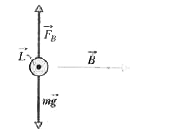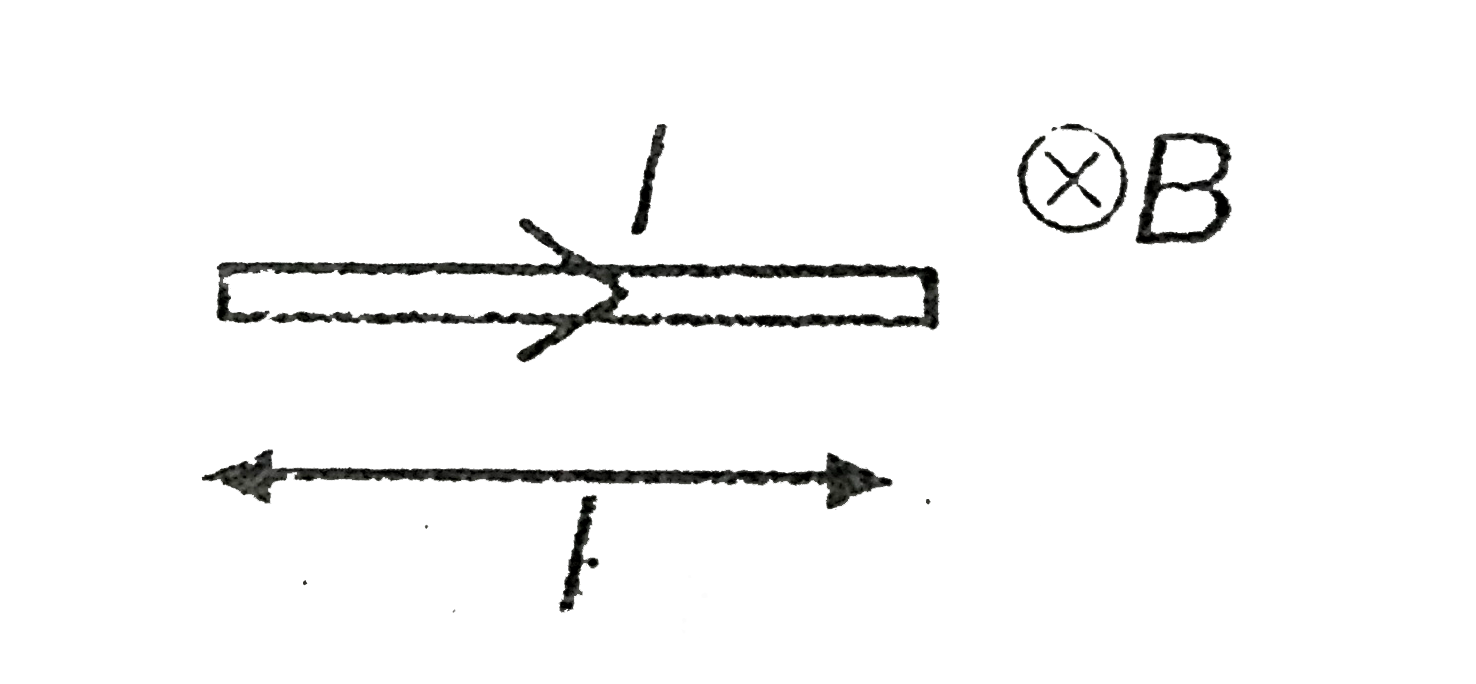A straight horizontal copper wire carries a current i = 30 A. The linear mass density of the wire is 45 g/m. What is the magnitude of the magnetic field needed to balance its weight?
(1) Because →L is directed horizontally (and the current is taken to be positive), Eq. and the right-hand rule for cross products tell us that →B must be horizontal and rightward to give the required upward →FB.
The magnitude of →FB is FB=iLBsinϕ Because we want →FB to balance →Fg, we want
iLBsinϕ=mg,
where mg is the magnitude of →Fg and m is the mass of the wire. We also want the minimal field magnitude B for →FB to balance →Fg. Thus, we need to maximze sinϕ in

To do so, we set ϕ=90∘, thereby arranging for →B to be perpendicular to the wire. We then have sinϕ=1, so yields
We write the result this way because we know m/L, the linear density of the wire. Substituting known data then gives us
B=(46.6×10−3kg/m)(9.8m/s2)28A
=1.6×10−2T
This is about 160 times the strength of Earth.s magnetic field.
Topper's Solved these Questions
- MAGNETIC FORCEBOOK - RESNICK AND HALLIDAYCHAPTER - MAGNETIC FORCEEXERCISE - Check point
6 Videos
- MAGNETIC FORCEBOOK - RESNICK AND HALLIDAYCHAPTER - MAGNETIC FORCEEXERCISE - Problems
49 Videos
- MAGNETIC FIELDS DUE TO CURRENTSBOOK - RESNICK AND HALLIDAYCHAPTER - MAGNETIC FIELDS DUE TO CURRENTSEXERCISE - Practice Question (Integer Type)
4 Videos
- MOTION ALONG A STRAIGHT LINEBOOK - RESNICK AND HALLIDAYCHAPTER - MOTION ALONG A STRAIGHT LINEEXERCISE - PRACTICE QUESTIONS ( Integer Type )
3 Videos
Similar Questions
A straight wire, of length L, carrying a current I, stays suspended horizontally in mid air in a region where there is a uniform magnetic field →B. The linear mass density of the wire is λ. Obtain the magnetic of this magnetic field.
View SolutionA straight wire of length L and carrying a curretn I stays suspended horizontally in mid air in a region where there is a uniform magnetic field →B. The linear mass density of the wire is λ. Obtain the magnitude and direction of this magnitude field.
View Solution
Knowledge Check
Two long, straight, parallel wires are 1.00m apart (as shown in Fig). The upper wire carries a current I1 of 6.00A into the plane of the paper.

What is the magnitude of the net field at S?A4.1×10−6TB1.6×10−6TC3.2×10−6TD2.1×10−6TTwo long, straight, parallel wires are 1.00m apart (as shown in Fig). The upper wire carries a current I1 of 6.00A into the plane of the paper.

What is the magnitude of the net field at Q?A2.13×10−6TB4.26×10−6TC1.21×10−6TD5.30×10−6TA wire carries current toward the north. In the region beneath this wire, What is the direction of the magnetic field due to the current ?
ANorthwardBSouthwardCEastwardDWestward
A straight wire of mass 400 g and length 2m carries a current of 2A. It is suspended in mid air by a uniform horizontal field B. What is the magnitude of the magnetic field ?

View SolutionA long, straight wire of radius R carries a current distributed uniformly over its cross section. The magnitude of the magnetic field is
View SolutionA copper wire of diameter 1.6 mm carries a current of 20A. Find the maximum magnitude of the magnetic field (vec B)due to this current.
View SolutionA straight wire carrying a current 10A is bent into a semicircular arc of radius 5cm. The magnitude of magnetic field at the center is
View SolutionA horizontal wire of length 0.5m carries a current of 5A. If the mass of the wire is 10mg, the minimum magnetic field required to support the weight of the wire is (g=10m/g2)
View Solution
